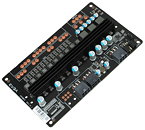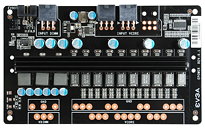- Joined
- Dec 6, 2011
- Messages
- 4,784 (0.98/day)
- Location
- Still on the East Side
EVGA has now released the EPower Board, a VRM board which can be hooked up to a motherboard and/or graphics card (some soldering required) and provide more watts required for uber-overclocking.
This warranty-voiding device features a 10-phase main output, a 3-phase secondary output, digital PWM (for the main output), three 6-pin PCIe power connectors, plus EVBot and fan support. The EPower Board costs $99.99 and is "intended only for advanced users with electronics experience."


View at TechPowerUp Main Site
This warranty-voiding device features a 10-phase main output, a 3-phase secondary output, digital PWM (for the main output), three 6-pin PCIe power connectors, plus EVBot and fan support. The EPower Board costs $99.99 and is "intended only for advanced users with electronics experience."


View at TechPowerUp Main Site




 It's targeted towards the exact opposite of that. To the people who deactivate everything that has to do with saving energy. No seriously, for extreme overclockers this thing is like god on a PCB but for everybody else it's useless and they'll most certainly ruin their graphics card with it.
It's targeted towards the exact opposite of that. To the people who deactivate everything that has to do with saving energy. No seriously, for extreme overclockers this thing is like god on a PCB but for everybody else it's useless and they'll most certainly ruin their graphics card with it. Lack of on-the-fly, precise automated voltage adjustment (CnQ or SS) results in what i wrote above.
Lack of on-the-fly, precise automated voltage adjustment (CnQ or SS) results in what i wrote above.





